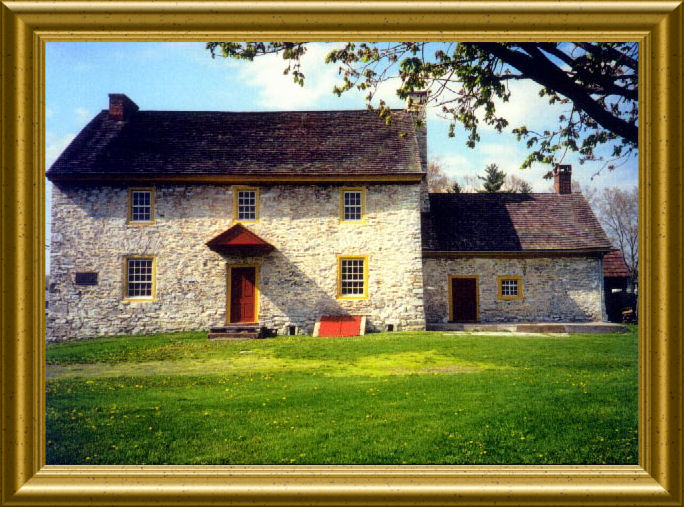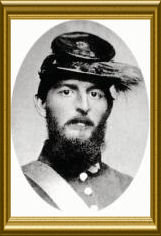History
 Mr. Isaac Meier married Mr. Herclerode's daughter, Catherine, and bought the home and plantation. The home is located near the Tulpehocken Creek and the town was later known as Tulpehocken Town. Tulpehocken is a Lenape Indian word which means "land of the turtles". Mr. Meier laid out the streets for his town in 1768.
Mr. Isaac Meier married Mr. Herclerode's daughter, Catherine, and bought the home and plantation. The home is located near the Tulpehocken Creek and the town was later known as Tulpehocken Town. Tulpehocken is a Lenape Indian word which means "land of the turtles". Mr. Meier laid out the streets for his town in 1768.In July of 1770, Mr. Meier was shot and killed in a local tavern and his murderer was never found. After Mr. Meier died, his town gradually became known as Meier-Town, in tribute to him. After awhile, the spelling of the name took on an English form of Myer rather than the German form of Meier.
Many of the early homes in the Myerstown area were built of limestone or logs. Examples of these original buildings can still be seen on Main Avenue, South Railroad Street and South Cherry Street.

During the 1820's, a part the Union Canal ran right through the Borough. Utilizing the streams of the area, eight canal locks were constructed and canal boats were built locally. This helped Myerstown to flourish and soon factories, hotels, and stores sprang up in the vicinity.
Then, in the 1850's the Lebanon Valley Railroad was built south of the Union Canal, which brought more prosperity to Myerstown. After the Civil War, horse-trading was a large business in Myerstown, which spun-off to other businesses. Palatinate College as started and later became Albright College and is now the Evangelical School of Theology.
During the American Civil War, many young men volunteered to fight for the Union. Several of the many heros of the Union forces were born and raised in Myerstown. One of these heros was Color Sgt. Henry Brehm of the 149 Pennsylvania Regiment. He was mortally wounded at the Battle of Gettysburg on July 1, 1863 and died of his wounds in August of that year. Sgt. Brehm 's body was returned to his home and is buried in the Union Cemetery on Washington Avenue.
November 9, 1909, a group of Myerstown Citizens held a meeting in the Keystone Fire Company Hall to form an organization to petition for a Borough Government. Organization was effected by the election of Dr. A. E. Gobble as Chairman, George S. Bleistein as Secretary, and B. C. Lindenmuth as Treasurer. It was decided that B. C. Lindenmuth take out the petition for signers and that the Committee then take the petition out in the order of their election.
The next meeting on January 18, 1910, it was decided to assess each member of the Committee $5.00 to help defray the present expenses of the cause. All members at once paid their assessment as follows:
- H. G. Deitz
- Dr. A. E. Gobble
- J. H. Wilhelm
- James Kalbach
- B. C. Lindenmuth
- A. S. Greenwalt
- Henry L. Corl
- Joseph M. Painter
- Cornelius Loose
- George S. Bleistein
- John A. Donges
The Borough was incorporated February 5, 1912 with a population of 2,335. Attorney Honker advised the committee in regards to the officers to be elected as follows:
- Burgess for four year term
- Seven Councilmen for four year terms
- Tax Collector for four year term
- Assessor for four year term
- Three Auditors for four year terms
- High Constable and a Constable
- Judge of Elections and two Inspectors for two year terms
- Five School Directors to be appointed by the Court
- Council to organize by electing a Treasurer, Secretary, and Street Commissioner
The First Myerstown Borough Council:
- Henry L. Corl, President
- Samuel P. Beckay
- John A. Donges
- Monroe C. Haak
- James Kalbach
- Joseph M. Painter
- Isaac B. Haak
- Edwin R. Noll, Secretary
- Frank B. Uhrich, Treasurer
- Harry A. Honker, Solicitor
- Edward Spangler, High Commissioner
- Alex Harnish, Constable
- Warren G. Hain, High Constable
- Abraham B. Landis, Tax Collector
- Addison Bower
VIGNETTES OF MYERSTOWN OVER 250 YEARS, 1768-2018
By Donald Brown
"Vignettes of Myerstown over 250 Years, 1768-2018" - Donald Brown
